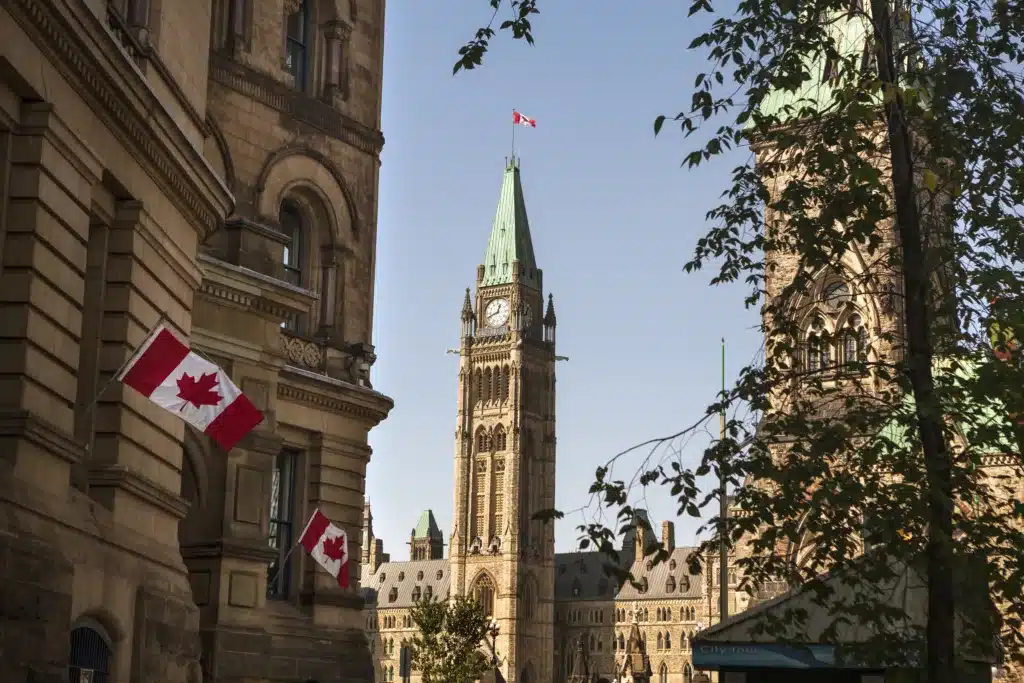Federal Budget 2023: CAGBC’s Response
Economic outlook dampens investments in green building but accelerates clean energy
Jean-Marc Fagelson on March 29, 2023
- Theme
- Advocacy
The Canada Green Building Council (CAGBC) and its members have been working with the federal government to provide a perspective on how green building – specifically zero-carbon buildings and deep carbon retrofits – can help Canada create jobs, build a robust low-carbon supply chain, meet climate targets, and better compete on a global stage. While Budget 2023 doesn’t reflect the breadth of recommendations CAGBC made as part of pre-budget consultations, there is some positive news on climate action.
“This decade is a critical moment for decarbonizing the building sector in Canada. We know there can be no zero carbon buildings without clean energy, and this budget puts Canada on a path to reducing carbon emissions from the electrical grid,” said Thomas Mueller, President and CEO of CAGBC. “However, without decisive action and investment in zero carbon buildings, our climate targets will be out of reach.”
Investing in clean electricity
Budget 2023 focuses on the electrical grid with a $10 billion investment through Canada Infrastructure Bank in its Clean Power priority area and at least $10 billion for its Green Infrastructure priority area. Together, these investments may provide more electrical capacity and enhanced transmission, or other clean energy sources, needed to decarbonize Canada’s built environment.
Other announcements include the renewed funding for Natural Resources Canada’s Smart, Renewables and Electrification Pathways program, which supports critical regional priorities and Indigenous-led projects.
Budget 2023 also includes an Investment Tax Credit for Clean Electricity, targeting large-scale projects with a 15 percent refundable tax credit, extended to now include taxable and non-taxable entities, including pension funds. This program could increase the flow of capital and create opportunities for investment and acceleration. The building sector and other industries would benefit from this credit to support decarbonization.
While these investments are commendable, achieving Canada’s 2030 Emissions Reduction Plan will require more than measures to “clean” the electrical grid. Buildings account for 90 percent of electricity use in Canada and should be part of the equation. Buildings must be designed or retrofitted to be “good grid citizens” by minimizing the amount of power they use and helping grids meet increasing demand.
Supporting the supply chain
Research predicts that almost 75 percent of emissions of new buildings between now and 2030 will come from materials and processes. Federal policies must invest in innovation to scale up made-in-Canada, low-carbon construction materials, creating jobs and supporting small- and medium-sized companies. The United States already uses a preferred procurement approach, and the Canadian government must adopt its own Buy Clean strategy to remain competitive globally.
CAGBC welcomes the federal government’s extension of the Clean Technology Investment Tax Credit to geothermal energy systems. This program provides support at a 30 percent refundable rate to Canadian businesses adopting clean technology and contributing to carbon emissions reductions. Including geothermal systems is expected to cost $185 million from 2023-24 to 2027-28.
While Budget 2023 extends the Tax Credit, it does not include high-performance building envelope technologies that reduce demand for energy while enhancing resiliency. For example, the United States’ Inflation Reduction Act provides tax credits for building envelope materials like electrochromic glass. Incentives such as these are essential to overcoming financial barriers and positioning Canada as an innovative green building leader.
Budget 2023 doesn’t specify support for the development of low-carbon building materials, but there are provisions and incentives for carbon storage in concrete. As cement has a significant carbon footprint, the Investment Tax Credit for Carbon Capture, Utilization, and Storage will prioritize its use for carbon capture at an estimated cost of $520 million over five years.
In addition, this incentive will require projects storing carbon in concrete to have their process validated by a third-party based on an ISO standard. Currently, CAGBC is working with the University of Toronto to explore carbon capture and utilization in cement, a project funded by Environment and Climate Change Canada.
The government also confirmed the Clean Technology Manufacturing Investment Tax Credit, announced last year. This tax credit will be equal to 30 percent of the capital cost of eligible property associated with the manufacturing or processing of clean technologies, including equipment for air and ground heat pump systems. The credit will be available on or after January 1, 2024, through 2034.
The government also announced that the Strategic Innovation Fund will be topped up to $500 million over ten years. This program could encourage clean technologies in the manufacturing and natural resources sector, which may provide some downstream benefits for green building.
What’s missing: Green Buildings Strategy

If we keep the same pace and do not require a long-term vision and transition planning for zero carbon buildings, analysts suggest that it could take 71 years to retrofit commercial buildings completely and 142 years for the residential building stock.
Given that the building sector offers a proven solution to meaningful carbon reductions, it is surprising that Budget 2023 doesn’t mention the upcoming Green Buildings Strategy. Yet, Environment and Climate Change Canada suggests that the building sector should reduce 38 million tonnes of CO2 by 2030. Simply focusing on retrofitting large buildings could get us 55 percent of the way there, with reductions of about 21.2 million tonnes within this decade.
“Green building will play an integral role in mitigating the worst impacts of climate change and meeting Canada’s 2030 Emissions Reduction Plan,” said Mueller. “While Budget 2023 continues to put Canada on a path to a low-carbon future, it is disappointing that the importance of the building sector’s role isn’t recognized. Despite this, CAGBC supports the significant investment in a clean grid and will continue our work with the federal government to shape the Green Buildings Strategy and transition the building sector towards zero carbon.”